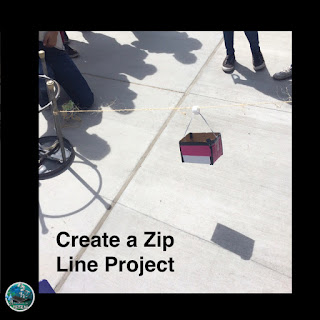As a teacher I sometimes feel overwhelmed when I think about teaching the Next Generation Science Standards. How can I possibly have my students creating, designing, and modeling when they are struggling with just understanding the basics. I teach at a school of mostly low income language learners. The students do not have a lot of background experiences to apply and struggle with the vocabulary. The old California Science Standards were mostly in the depth of complexity level one asking the students to just know and identify. It was challenging to get through teaching them the concepts and still have time in the pacing to have them demonstrate their knowledge in an end of the unit project that was teacher directed. Now I am suppose to get them into the depth of complexity level four with creating, designing, and modeling. Thinking about it makes me feel like I am at the bottom of Mount Everest and I have to get to the top with no supply of oxygen. Until I decided to let go and just see what can happen when I put the students in charge of their learning.
 |
| This is the hook I created for my Newton’s laws unit. |
It started with me creating a hook for Newton’s laws that got the students questioning why. I had an idea of the type of questions the students would come up with based on what they were seeing but the ones they actually came up with far surpassed my expectations. I took their questions and as a class we decided on which ones they wanted to find the answers to. Then instead of me directing the lessons and giving the students the information I provided them with different ways for them to investigate and learn while trying to answer the question. I gave them video options, online investigations, hands-on stations, and readings. The students could choose which ones they did each day. My job was to monitor their learning and offer support when they asked. At the end of the day the students meet with their groups to discuss what they learned and how it applied to the questions. The students were engaged for days and the best thing was that they were actually learning the concept and enjoying themselves.
 |
| https://bit.ly/Zip_Line_STEM |
I admit that as I started this unit on Newton’s laws I had a rough roadmap of what I wanted the students to learn but I didn’t have all the details figured out. I was letting the students fill them in and seeing where they would take us. At the end of the unit I wanted the students to create a zip line that could carry a raw egg but I had never done the project before. I found different ideas online but nothing that seemed to have what I wanted so again I decided to let the students take the lead. I set up the challenge and gave students the parameters and then I let them go. They created their own containers. They created their own way to test the different variables like rope type, angle of the line, and amount of weight in the container. Some groups struggled with making it work and some groups struggled with problem solving when things weren’t working. The conversations that were happening, even with the struggling groups, showed how much the students were actually learning and that they were applying the concepts they learned during their earlier investigation of the hook questions to this activity. I discovered that by allowing the students to take the lead they were able to accomplish a lot more than I originally thought possible. Even the students that struggled throughout the whole unit still learned more through this type of investigation then they would have learned if I took the typical way of teaching.
Doing this unit reminded me that not only were the students acting like scientists but I was also. Scientists ask what if, why, and how and that was what I was doing. I changed the variables of how a lesson was taught to see what if. What if I let the students take charge? What if the students decided on what they wanted to learn? What if the students decided how they wanted to learn? What I discovered was that by giving the students the control I also helped them to become better decision makers, better problem solvers, and they became more confident in their ability to learn. So I challenge you to do the same. See what happens when you let students take charge of their learning. See what happens when you ask what if?
